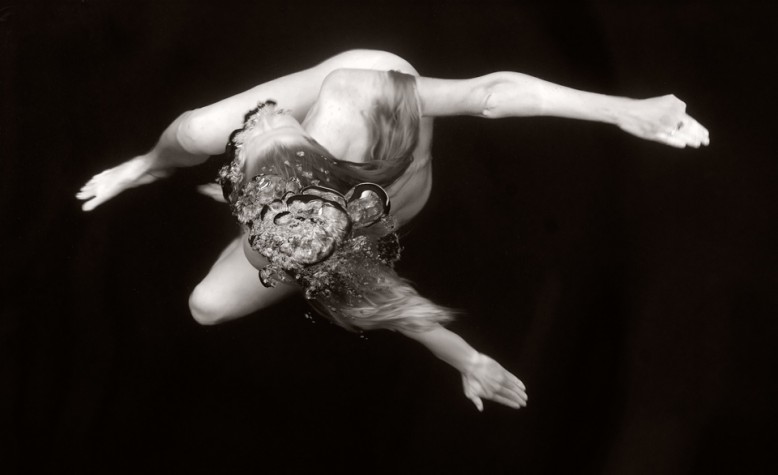Film Noir
The Canvas – January 2015
By Jaime Thompson
Beth Anne Gordley: Gordley is well trained in the technical aspects of film photography, including processing and printing, but she has recently transitioned to digital photography. “I enjoy manipulating light, the subject, and composition,” says Gordley. “It is a creative challenge to alter the perception of a scene with cameras, various lenses, and lighting techniques.” She notes that, while becoming proficient in the details of film “was an invaluable experience,” she enjoys the “instant gratification” of digital photography. Being able to immediately see a photograph after she takes it “allows more time to apply unique, creative techniques to my image,” she says. No matter what methods she uses to capture her vision, Gordley’s most important consideration is light. “If there is a unique or fascinating object or scene but the light is not dynamic or soft, it will not render an image interesting,” she says. “Light is inspirational.”
The simple yet enchanting details of daily life hold special magic for Gordley: “It may be a sliver of light on fabric, a glimpse of color in a monochromatic scene, the curve of a handle, or a wisp of hair,” she says. “I must have a connection with the subject I’m shooting, even if it’s a mushroom! When I feel a synergy, then it is a personal work of art.” In Evyn’s Dream, the connection is personal. Evyn, Gordley’s niece, was an enthusiastic participant in their fun, easygoing photoshoots. Using a Holga with a plastic lens, she was able to capture a particular softness that lends the image a vintage, even timeless, appearance. Evyn’s relaxed, contented pose and lush surroundings harken back to the languid portraits of beautiful, otherworldly women painted by the Pre-Raphaelites. “I saw in that moment the image of a young woman, soft, feminine, vulnerable, and at peace, alone with her dream,” Gordley says.
Ted Anderson: His entry point into photography was music. In the 1970s the record label ECM featured European and Scandinavian jazz artists, whose album covers often displayed monochromatic photographs. “One could listen to the icy tones of saxophonist Jan Garbarek while gazing upon an image of a lone tree on a barren hillside. The perfect visual accompaniment to the music,” says Anderson. “I was in college, and didn’t yet have the means to purchase a good camera, but I always thought ‘someday.’” In the early 1980s Anderson was lent a 35 mm Minolta by a colleague, which started his passion for taking photographs. It wasn’t until 2007 that Anderson pursued the medium artistically. “It’s in creating an image that can engage another person, emotionally or intellectually, that I find the most enjoyable challenge. I rarely put elements together artificially, and try to present images as I find them,” says Anderson. “If a sense of story arises while viewing an image, then all the better.”
Clue is an enigmatic image that allows the viewer’s imagination to create the story. Sometimes, those tales are the most fascinating. While he was walking the beach at Reid State Park on Georgetown Island, a “glorious” fog rolled in. Completely by chance, a figure began to approach, and Anderson started snapping. “I am drawn to austerity, simplicity, and to capturing beauty in places that might seem lonely to some,” he says. “I think a lot about the relationship between people and their environments.” The atmospheric fog and distant figure of Clue are enough to compel the viewer to delve into its mystery, while its aesthetic components enhance the tension. For example, the exquisite angle of the water meeting the shore and the twig lying on the sand draw the eye to the figure. Clue’s hazy edges and crisp foreground impart a surreality that recalls classic film noir movies of the 1940s.
Michael Seif: Seif has had a lifelong interest in photography, and recalls being captivated by the imagery in magazines such as Life, Look, and National Geographic. He became serious about photography in the 1960s, photographing the urban landscape of New York City. “Part of my interest in photography is being able to make a record, to show other people and to save for the future,” says Seif. He notes that looking back at his 1960s New York images, for example, and comparing them with how the city looks today is “fascinating.” He is also spurred on by the challenges of the medium and how it forces him to be a careful observer, no matter where he is. “It often forces me to do things not very comfortable for me, whether crawling through wet weeds at sunrise to photograph spider webs or photographing cosmetic counters in department stores,” he says. “Despite my initial discomfort, I usually am happy with whatever it is that photography forced me to do, because I end up pleased with the images.”
Although Seif puts enormous care and consideration into his work, great images that arise from spontaneity and serendipity are especially exciting for the artist. Exhalation is just such an image. The piece is part of a series of portraits that Seif created with models who swim, glide, and “dance” underwater. “When I work with models, we work together in a collaboration,” he says. “I’ve been extremely fortunate to be able to work with creative, artistic models who bring their own ideas.” For Exhalation, the goal was “to show the figure in motion,” Seif explains. He stood on a cliff directly above the water, where the model “went through a series of graceful contortions. And then she exhaled underwater,” he says. Seif knew that the unplanned moment, and the resulting bubble of air, would make this photograph an extraordinary one. The perspective, tight composition, heavy contrast, and sinuous shapes have a nearly abstract quality. The model’s flowing hair and unconventional pose lend a mythical quality to the piece: it looks as though Seif chanced upon a sea nymph and clandestinely observed her graceful dance.






